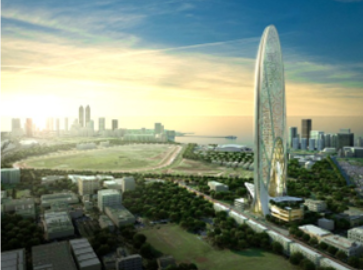Apr
2023
India: ‘If you build it, they will come’
DIY Investor
22 April 2023
Fans of Kevin Costner* may recall Field of Dreams. The above quote went to the heart of the 1989 film. It sprung to mind during our recent visit to India. Namely, that Indian infrastructure is finally shifting from a ‘hindrance’ to a ‘help’. In the words of The Economist, “India is getting an eye-wateringly big transport upgrade.” By Rob Brewis
Now those of you who know us as investors in Emerging Markets (“EM”) consumption may be asking how does this help Aubrey EM? Stay with us and the answer will become abundantly clear.
The current breakneck pace of infrastructure spend is most painfully obvious in Mumbai, where city planners are trying to build out 10 metro lines simultaneously, as well as a highly ambitious and partly submerged coastal expressway.
It is the same story in Indore, India’s 17th most populous, and apparently cleanest, city where another metro line is under construction. This is more of a pre-emptive build, as we have become used to in China (‘if you build it…’).
However, most English-speaking journals reporting on this give the Modi administration little credit. The first dig is always that the development was set in motion by previous administrations. But we remember the great reforms of Narasimha Rao’s government in the early 1990s which were going to rid India of its ‘Hindu rate of growth’, and the numbers clearly suggest otherwise.
In 1990, China and India had the same GDP per capita of around 350 USD per head of population. Today, China’s number is 5x greater: 12,500 USD vs 2,500 USD. There was precious little progress before Modi.
India’s previous investment boom was a decade ago, and was fuelled by public sector banks, whose balance sheets were compromised for a period of time.

The resolution of these state banking problems was one of the thorniest issues facing the Modi administration but has finally been resolved through a combination of mergers and recapitalisation. India’s now well capitalised banking system is a key reason why a cyclical upturn is poised to reinforce the well-known structural story, with loan growth rising steadily for the first time in a decade.
There are multiple drivers for the coming investment upturn. However, the major one, in our view, will be private sector corporate capex. This will be from domestic corporates, most of whom (other than perhaps the Adani Group) are starting from a very strong and underleveraged financial position, as well as foreign companies.
At a little over 80bn USD last year, foreign direct investment (“FDI”) was at record levels for India, but in Chinese terms at least, it is still small. Modi’s reformed promotion body, ‘Invest India’, is helping, as are his production-linked incentive schemes.
So too are state incentives as competition to land new investments intensifies. The poster boy is perhaps Apple, whose iPhone exports from India grew from 100 million USD/month last April to a staggering 1bn USD/month in January this year. But manufacturing investment is broadening rapidly with flows from 162 countries, into 61 sectors and directed to 31 states and territories, that is, nearly all of them.
All the above helps to explain why India is now, not only a realistic destination for those seeking to diversify from China, but it is also becoming a more obvious one. None of this is to say FDI won’t continue to wash up on the shores of Vietnam, Indonesia, or Mexico, but an ever-increasing share is heading to India.
And this is where the potential for consumption comes in. India’s urbanisation rate is low, at around 35%, and the opportunity is in growing this more rapidly. But why would you leave the farm if there are no jobs in the towns or cities to go to?
What this investment upcycle implies is rising urban job creation, whether its construction, manufacturing, or associated service jobs, and only this will drive urbanisation. Experience tells us that an urban job comes with an income which is a multiple of the rural one left behind, and that multiplier drives consumption.
Our friendly Mumbai Uber driver, Sakir, was a case in point. Hailing from Chhattisgarh, one of India’s poorer states, he taught himself decent English which allowed him to negotiate the outrageous rate of 2,500 INR (30 USD) for a day driving around Mumbai. With his wife, who makes clothes, and two children he lives in a “small house”, for which read tenement.
An apartment is not yet within reach, but is an aspiration. As well as keeping them clothed, housed, and fed, he also pays for some form of private education for his children so that they can have a better future. No doubt, some funds also return to relatives back home. That 30 USD, less the cost of running a half-respectable Maruti for the day, goes a long way.
*It’s reasonable to believe that following ‘Yellowstone’ his fan base will be larger now.
Rob Brewis is Investment Manager at Aubrey Capital Management

Leave a Reply
You must be logged in to post a comment.